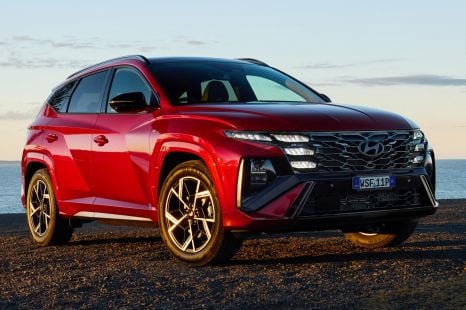

James Wong
2025 Hyundai Tucson review
2 Months Ago
What happens when you take a good thing and give it more power? It gets better, of course.
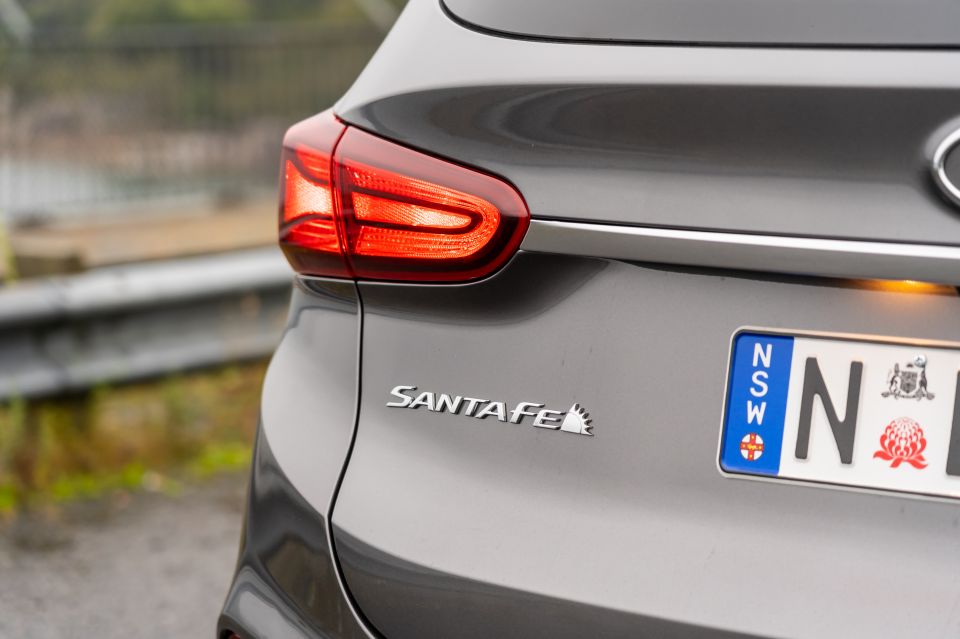


Contributor

Contributor


Contributor

Contributor
Quickly see how this car stacks up against its competition. Select any benchmark to see more details.
Where expert car reviews meet expert car buying – CarExpert gives you trusted advice, personalised service and real savings on your next new car.
There wasn’t much wrong with the Hyundai Santa Fe. Spacious, luxurious, and sharply priced, the only real criticism was the lacklustre base petrol engine.
With just 138kW of power and 241Nm of torque hooked up to a six-speed automatic, the four-cylinder engine lacked the grunt to comfortably haul the seven-seat Santa Fe around with a family on board.
Now it’s gone, replaced by a 3.5-litre naturally-aspirated V6. With 206kW and 336Nm, the bigger petrol option is a much punchier alternative to the diesel than its four-cylinder forebear.
But with no all-wheel drive option and a considerable thirst for unleaded, it isn’t all sunshine and roses.
Should you consider the Hyundai Santa Fe with a petrol engine, or does the smart money still lie with diesel power?
Pricing for the mid-spec Santa Fe V6 Elite kicks off at $51,550 before on-road costs, making it $3000 cheaper than the equivalent turbo-diesel model.
The base Hyundai Santa Fe V6 Active kicks off at $43,550 before on-road costs, while the range-topping V6 Highlander will set you back $58,050 before on-roads.
The most expensive Santa Fe is the turbo-diesel Highlander, priced from $61,050.

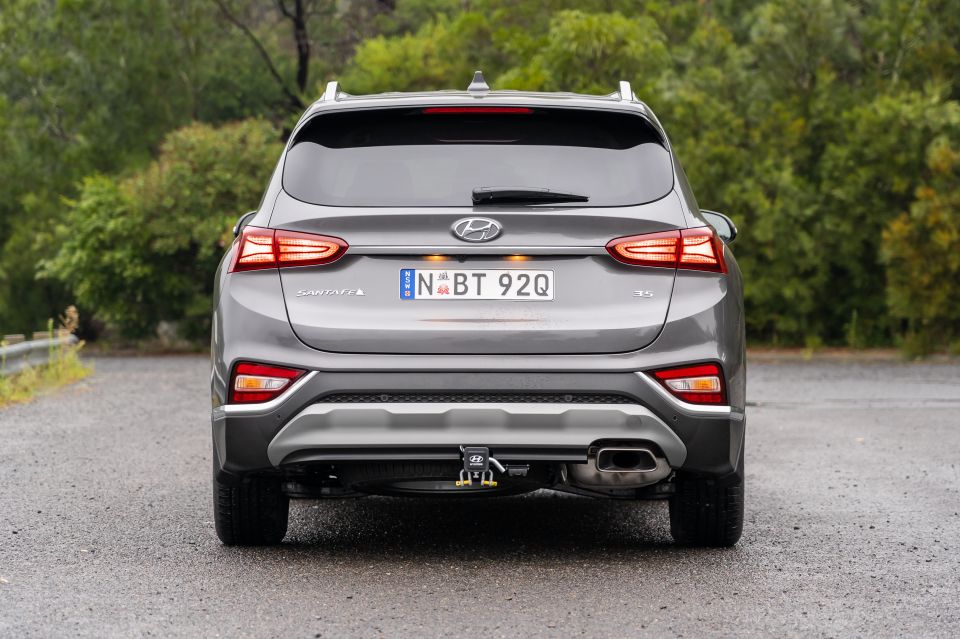
Buy your new car without the stress. It's fast, simple and completely free.

Great service from Travis and team, second time I have used this business would not hesitate to recommend them to anyone
Craig C.
Purchased a Ford Ranger in Sunshine Coast, QLD
CarExpert helped Craig save $7,224 on his Ford Ranger, now let us save you on your next new car.
Get your BEST priceStandard equipment in the Elite is generous. It gets a larger 8.0-inch touchscreen with satellite navigation, Apple CarPlay and Android Auto, and a 10-speaker premium sound system over the base model.
The seats are trimmed in soft leather with quilted detailing in the backrests, featuring power adjustment for the driver and front passenger. There’s also dual-zone climate control up front.
The Elite rides on 18-inch alloy wheels, the tailgate is powered, and you get keyless entry and start. Finally, there’s rear privacy glass, rain-sensing wipers, paddle shifters, and front parking sensors.
There isn’t much missing compared even to the range-topping Highlander, which gets seat heating, a head-up display, a panoramic glass sunroof, LED headlights, and 19-inch alloy wheels.
Nice to have, but not essential or life-changing – barring maybe the LED headlights, which promise a brighter and broader beam.
Seven colours are offered, with five of them commanding a $695 premium.


The Santa Fe wears a five-star safety rating from ANCAP, based on testing carried out in 2018.
That rating was based on an adult occupant protection score of 94 per cent, child occupant protection of 86 per cent, pedestrian protection of 67 per cent and safety assist of 78 per cent.
The entire range features autonomous emergency braking with forward-collision warning, blind-spot monitoring, rear cross-traffic alert, and lane-keeping assist as standard.
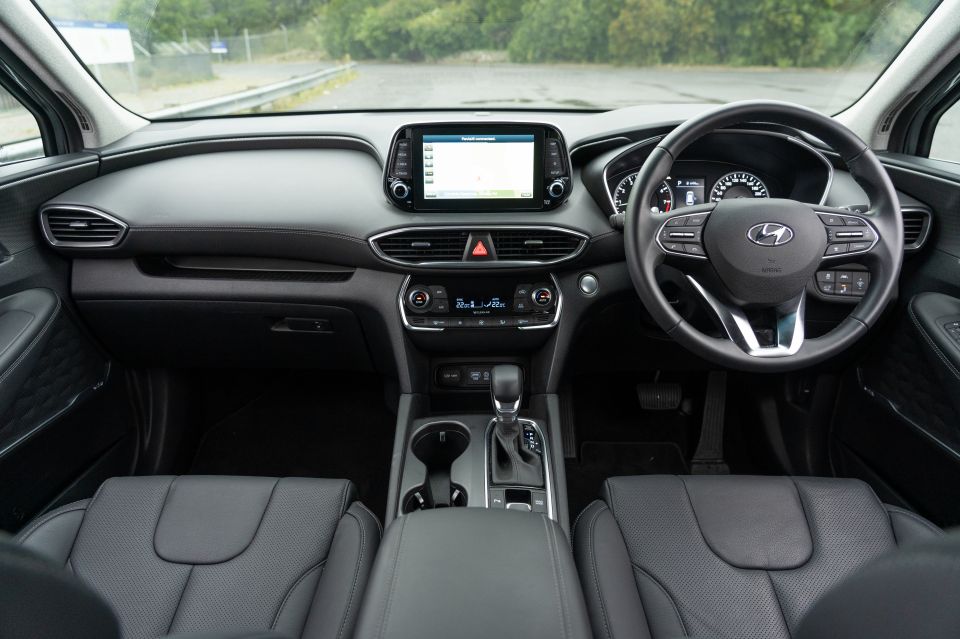

Some seven-seat SUV interiors are practical. Others are stylish. It’s tough to be both, but the Santa Fe manages.
There’s real flair to the design, from the cockpit-style cowling atop the dashboard to the subtle houndstooth roof lining, but it all works exactly as you’d expect of a family-friendly bus.
The driving position is excellent, with a huge range of adjustment from the wheel and seats, and the seats themselves are stuffed like your favourite armchair. There’s a real sense of quality to most of the materials, perhaps with the exception of the hard plastic door trims.
Storage spaces abound, from the generous cupholders and deep central bin, to the spacious door pockets and rubber-lined cutout in the passenger side of the dashboard.
Hyundai’s infotainment system is a known quantity by now. It’s logical, quick to respond, and has sharp graphics, while the reversing camera is one of the best.
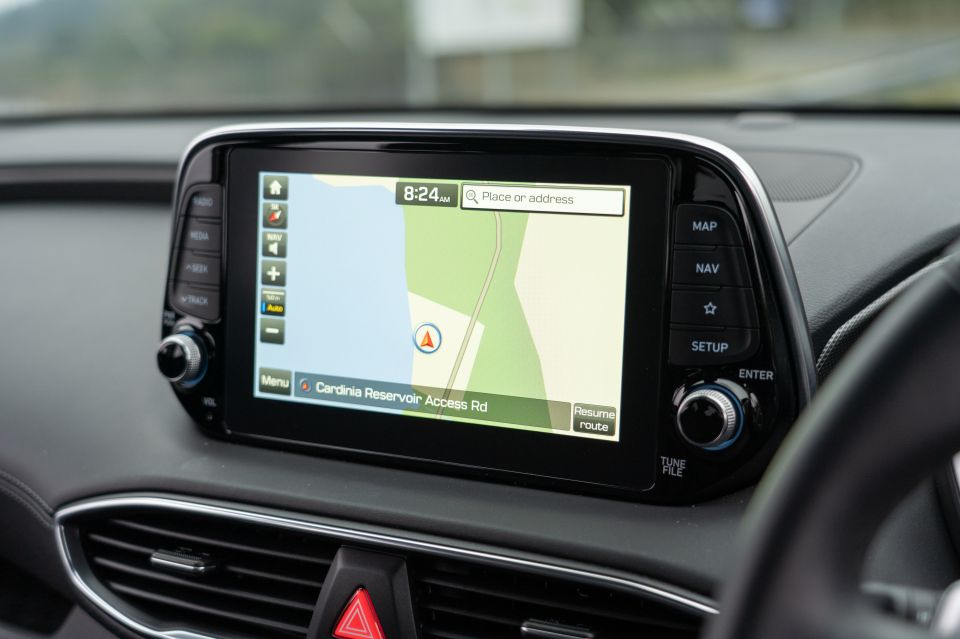
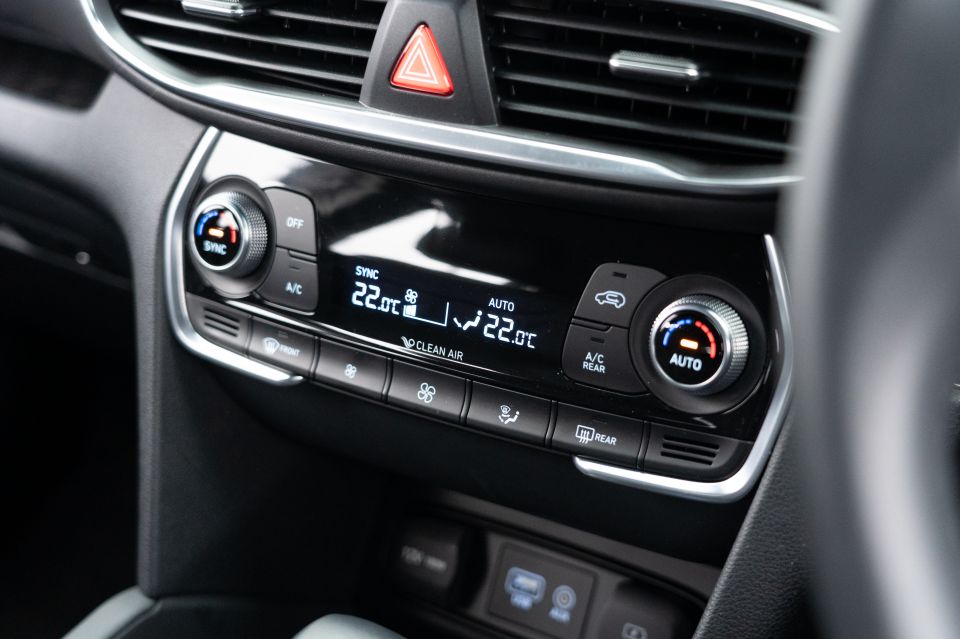
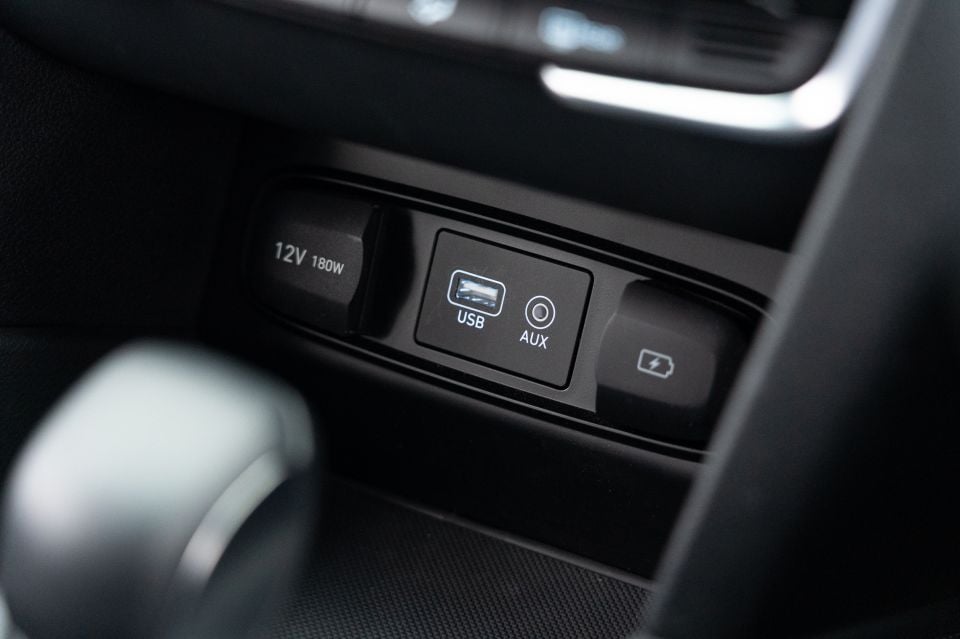
The second row is similarly well thought-out. There are air vents, two USB ports, and a storage spot built into the transmission tunnel for starters, while the second row slides to free up extra boot space or legroom for back-row passengers.
Speaking of which, there’s more than enough space for leggy teenagers behind tall drivers, and headroom is plentiful. There really isn’t much to complain about back there.
With water bottles slotted into the door pockets and iPads hooked up to the USB chargers, there really isn’t much for the kids to complain about either.
Things aren’t quite so rosy in the third row, which is compromised in the same ways as most of its seven-seat SUV rivals. Small kids will happily spend time back there, but it’s otherwise a space best reserved for gymnasts or long-running enemies.
At least there are air vents and climate controls back there.
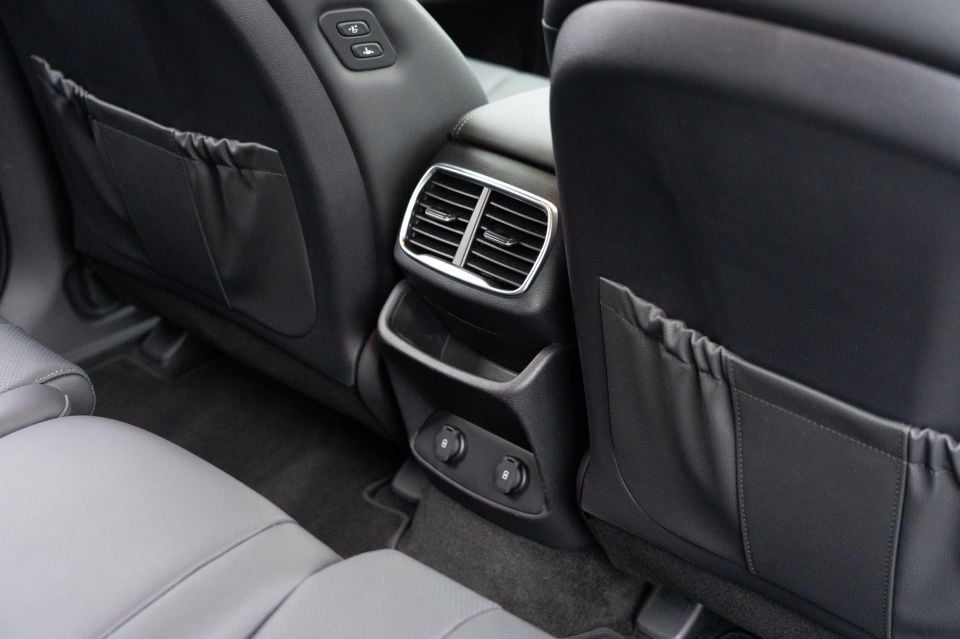
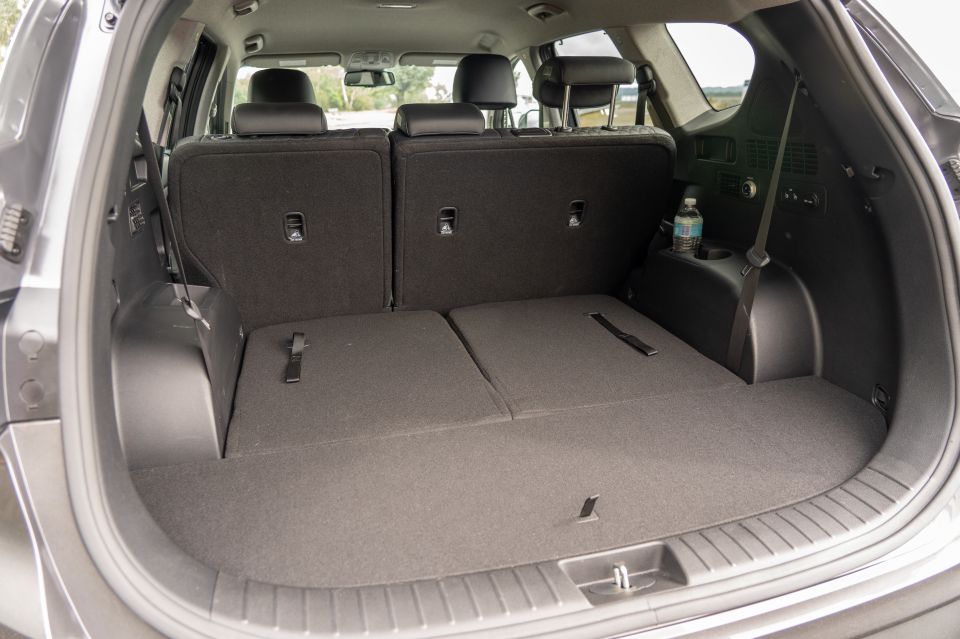

Legroom is tight, even with the rear seats slid forward, and the seats aren’t what you’d call wide. Actually, you’d call them narrow.
If you need to carry seven people around all the time, buy a people mover. If you need to fit a few more brats in for the occasional seven-up soccer run, the Santa Fe will do just fine.
The powered tailgate opens quickly to reveal a boot capable of holding 547L with the second row upright, and 1635L with it folded.
You’ll struggle to fit more than a few shopping bags in with the third row in place, though – Hyundai says there’s just 130L of space back there.
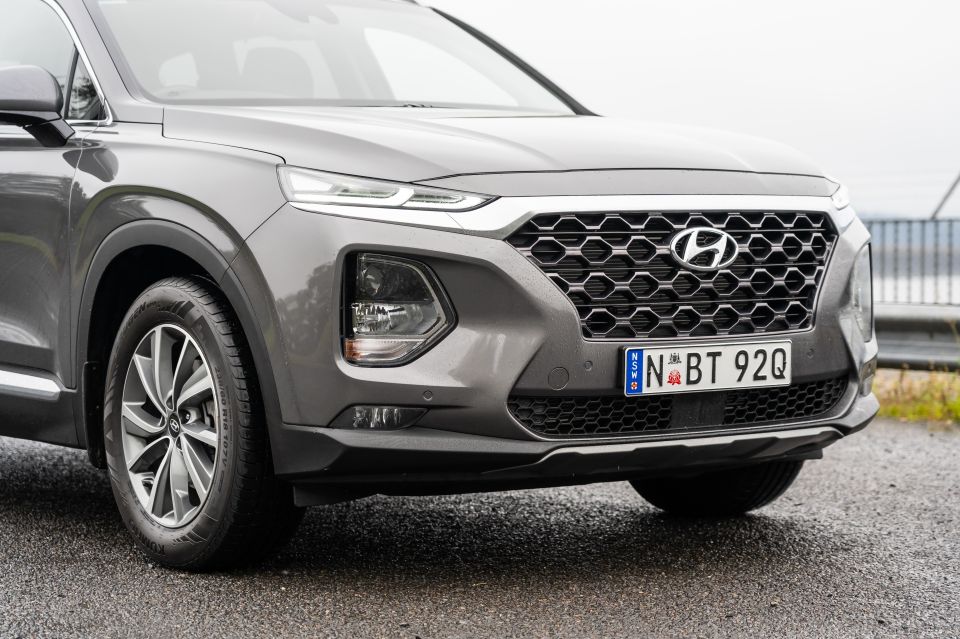
Power in the Santa Fe V6 Elite comes from a 3.5-litre naturally-aspirated V6 petrol engine making 206kW of power and 336Nm of torque, put to the front wheels through an eight-speed automatic transmission.
All-wheel drive isn’t offered on the Hyundai Santa Fe V6 in Australia, despite being available as an option overseas. Hyundai says packaging issues related to fitting the V6 in right-hand drive models are to blame.
Claimed fuel economy is 10.6L/100km on the combined cycle, we saw less than 10L/100km on a largely traffic-free highway run and closer to 12.5L/100km in town.
Bear in mind the lack of traffic at the moment, given the world is under partial lockdown to tackle COVID-19.
The Santa Fe V6 requires only regular unleaded fuel.
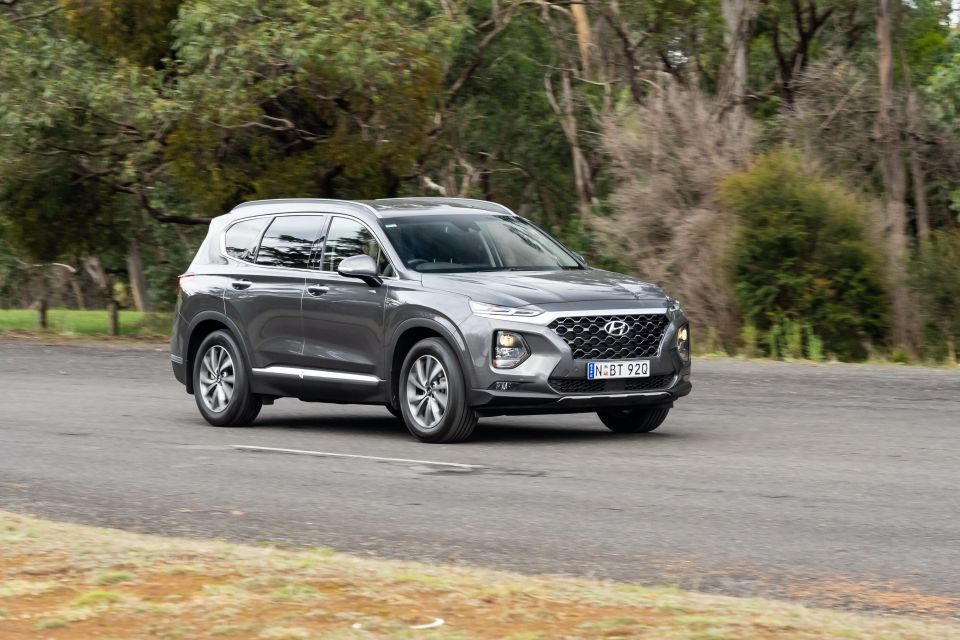

There’s no questioning the effectiveness of the Santa Fe with a turbo-diesel engine, but some people prefer petrol. For those people, the move from a four-cylinder to a six-cylinder engine is a huge win.
The V6 is a seriously smooth mover, with plenty of mid-range torque and a muted note. It’s effortless once you’re up and rolling, the eight-speed transmission slurring through the lower ratios to keep the engine in its sweet spot.
Boot the throttle and it shows a surprising turn of speed, the lusty engine happily revving out to redline. You don’t get that with the diesel.
You also don’t get nearly as much wheel spin with the oiler. Unfortunately, the one thing the Santa Fe V6 really needs – all-wheel drive – is the one option you can’t have.
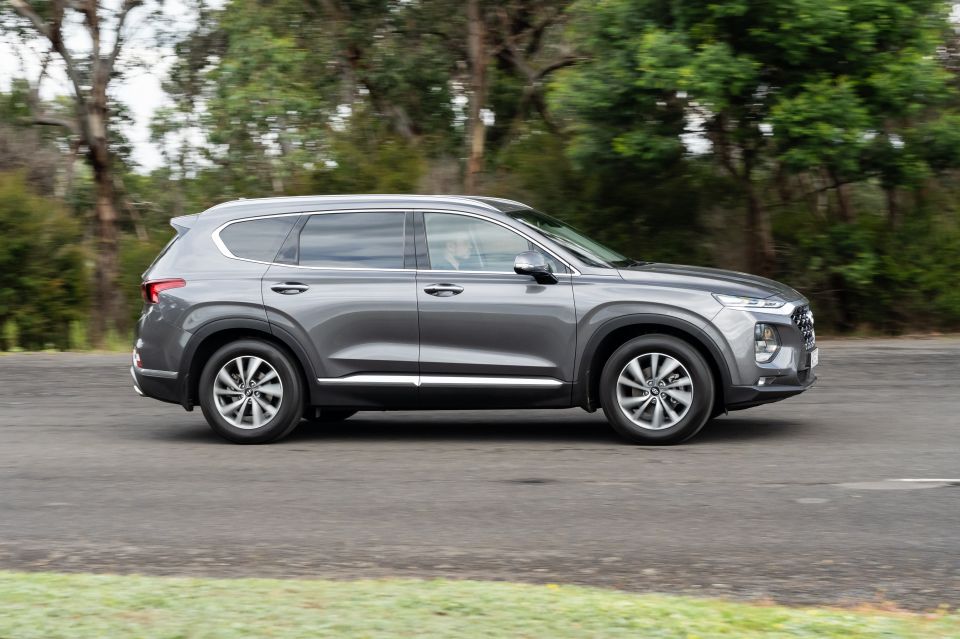
The V6 easily overpowers the front wheels when the roads get wet, with wheel spin off the line and axle tramp through first gear if you’re really determined.
It can be hard to get the car away from traffic lights without lighting it up when it rains, thanks to the punch on offer and a throttle tune that’s slightly too touchy up top. A longer-travel pedal with a more progressive tune would make the Santa Fe V6 a friendlier drive when the roads are damp.
There’s no questioning the refinement on the move. The cabin is whisper quiet at low speed, with barely any vibration from the drivetrain sneaking in to ruin the ambience. Upping the pace doesn’t ruin the serenity, either. Its price might start with a five, but the Santa Fe offers luxury car levels of road trip refinement.
The ride is brilliantly judged, erring on the side of comfort without turning the Santa Fe into an ungainly, floaty barge to drive. Nothing fazes it, from the sort of nagging high-frequency bumps common in the city to gnarly speed bumps or hard-edged highway hits.
Body control hasn’t suffered because of the comfortable ride. The big Santa Fe settles quickly over bumps and crests on the highway, soaking them up effortlessly. Serious time and money has been poured into the suspension, and it shows.
There isn’t much that flummoxes the Santa Fe. Tight streets aren’t the most natural home for large seven-seat crossovers, but a combination of light steering, excellent sight lines, and a clear reversing camera make the Hyundai a more natural city slicker than some of its rivals.
It fit more comfortably into my tight underground apartment garage than the Mazda CX-9, although there’s still no hiding its girth.
The Santa Fe is backed by a five-year, unlimited-kilometre warranty. Maintenance is required every 12 months or 15,000km – whichever comes first.
Hyundai offers a Lifetime Service Plan with capped-price services over the course of the Santa Fe’s five-year, unlimited kilometre warranty. The average cost of a service over this period is $342
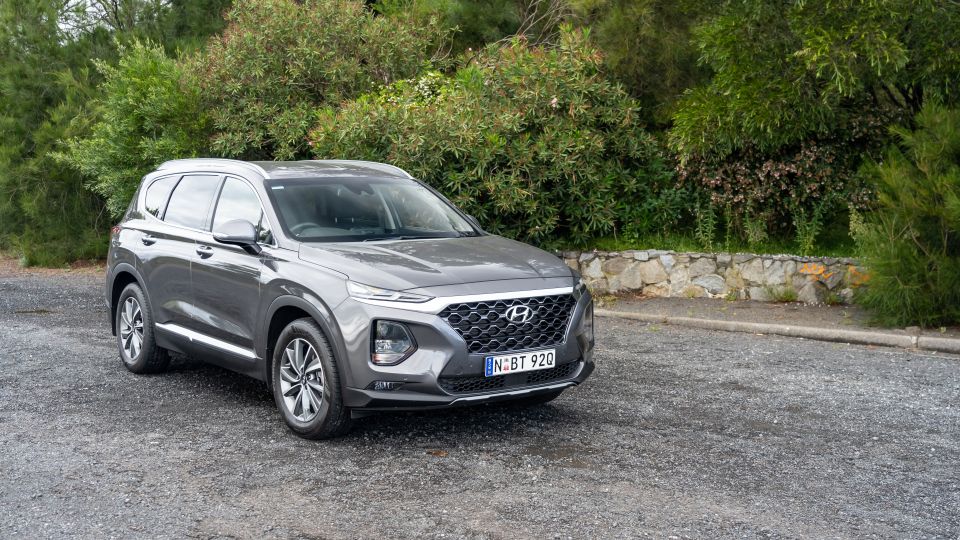
Buy your new car without the stress. It's fast, simple and completely free.

Great service from Travis and team, second time I have used this business would not hesitate to recommend them to anyone
Craig C.
Purchased a Ford Ranger in Sunshine Coast, QLD
CarExpert helped Craig save $7,224 on his Ford Ranger, now let us save you on your next new car.
Get your BEST priceThe Hyundai Santa Fe was already an excellent seven-seat SUV, but the V6 has further improved the breed. With more grunt and impressive levels of refinement, it represents a big step forward from the four-cylinder it replaces.
The mid-spec Elite trim level makes a lot of sense. It wants for little, and is a whopping $8000 cheaper than the Highlander. The range-topping car is nice, but not $8000 nicer.
There’s no escaping the fact the Santa Fe diesel is a smarter buy, though. With more torque, better fuel economy, and more traction in inclement weather, it’s worth the extra $3000.
It’s where my money would be going.
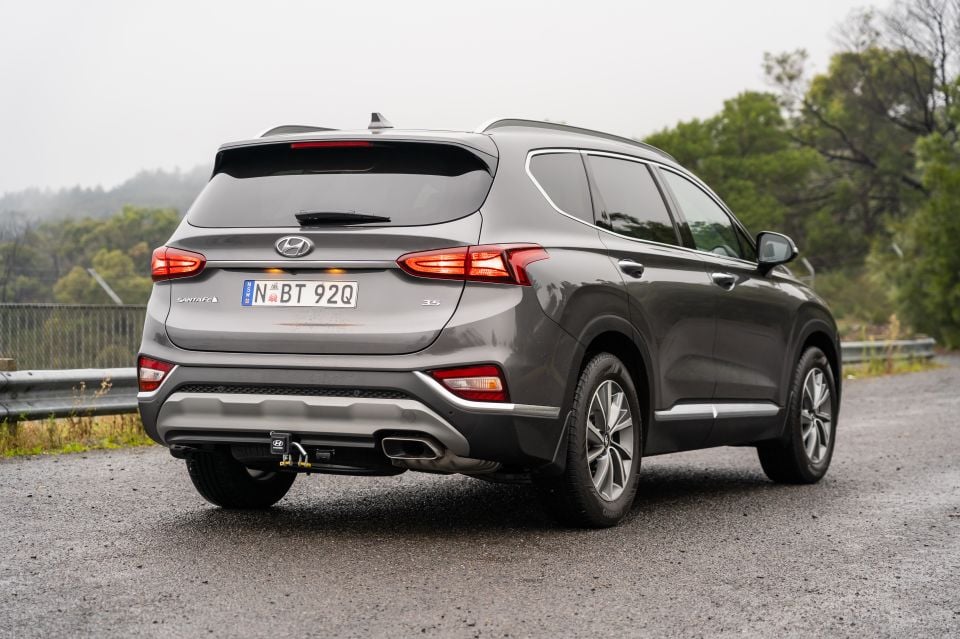
Click the images for the full gallery
MORE: Hyundai Santa Fe news, reviews, comparisons and videos
Where expert car reviews meet expert car buying – CarExpert gives you trusted advice, personalised service and real savings on your next new car.
Scott Collie is an automotive journalist based in Melbourne, Australia. Scott studied journalism at RMIT University and, after a lifelong obsession with everything automotive, started covering the car industry shortly afterwards. He has a passion for travel, and is an avid Melbourne Demons supporter.


James Wong
2 Months Ago


Josh Nevett
2 Months Ago


William Stopford
2 Months Ago


Max Davies
29 Days Ago
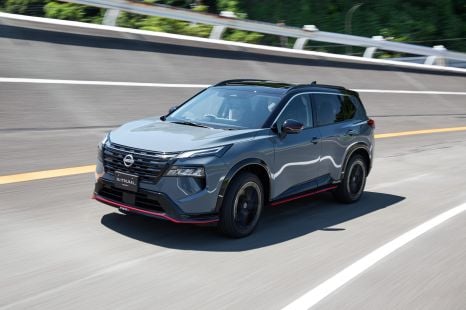

William Stopford
18 Days Ago


Andrew Maclean
18 Days Ago